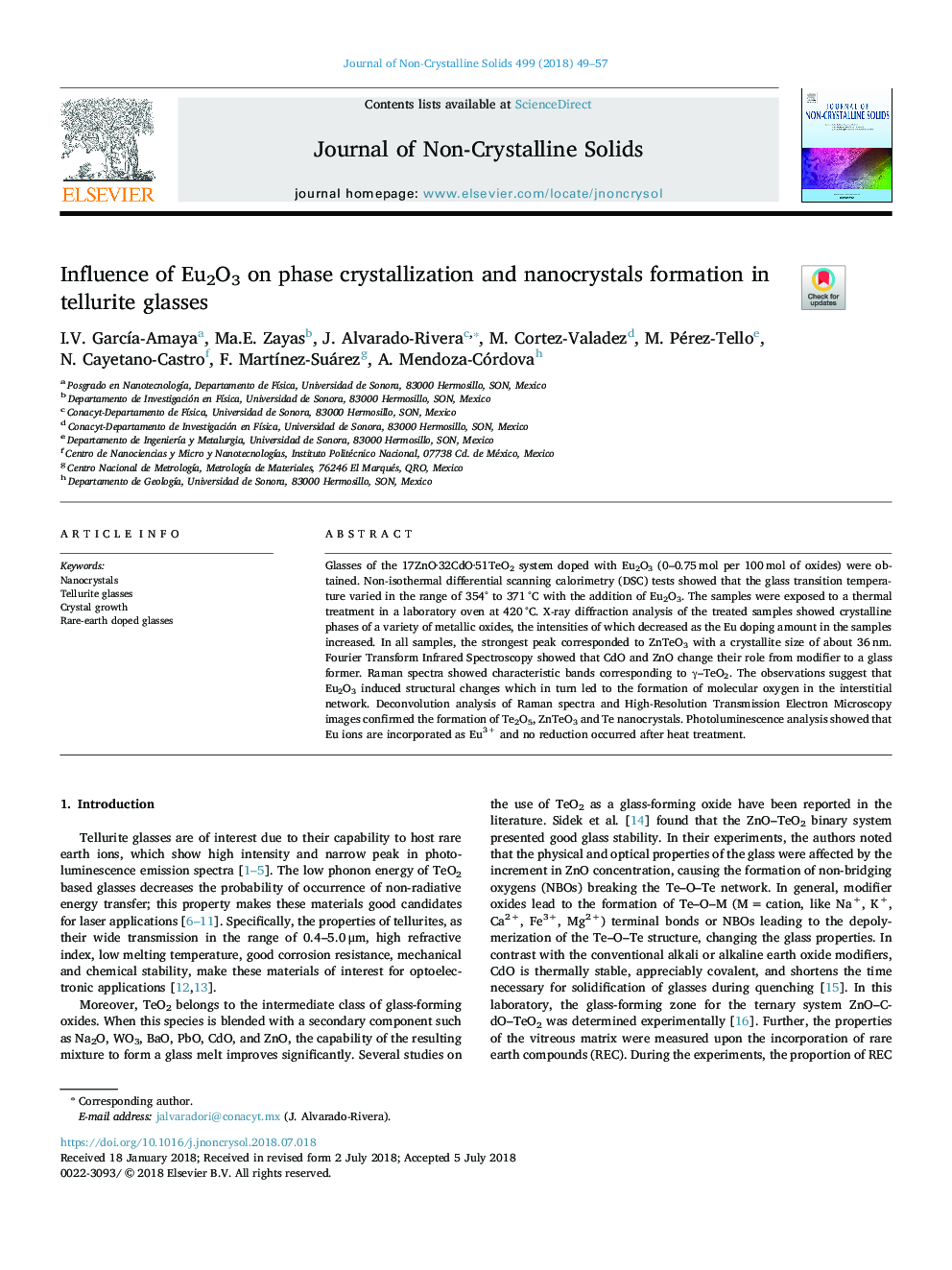| Article ID | Journal | Published Year | Pages | File Type |
|---|---|---|---|---|
| 7899530 | Journal of Non-Crystalline Solids | 2018 | 9 Pages |
Abstract
Glasses of the 17ZnO·32CdO·51TeO2 system doped with Eu2O3 (0-0.75â¯mol per 100â¯mol of oxides) were obtained. Non-isothermal differential scanning calorimetry (DSC) tests showed that the glass transition temperature varied in the range of 354° to 371â¯Â°C with the addition of Eu2O3. The samples were exposed to a thermal treatment in a laboratory oven at 420â¯Â°C. X-ray diffraction analysis of the treated samples showed crystalline phases of a variety of metallic oxides, the intensities of which decreased as the Eu doping amount in the samples increased. In all samples, the strongest peak corresponded to ZnTeO3 with a crystallite size of about 36â¯nm. Fourier Transform Infrared Spectroscopy showed that CdO and ZnO change their role from modifier to a glass former. Raman spectra showed characteristic bands corresponding to γ-TeO2. The observations suggest that Eu2O3 induced structural changes which in turn led to the formation of molecular oxygen in the interstitial network. Deconvolution analysis of Raman spectra and High-Resolution Transmission Electron Microscopy images confirmed the formation of Te2O5, ZnTeO3 and Te nanocrystals. Photoluminescence analysis showed that Eu ions are incorporated as Eu3+ and no reduction occurred after heat treatment.
Related Topics
Physical Sciences and Engineering
Materials Science
Ceramics and Composites
Authors
I.V. GarcÃa-Amaya, Ma.E. Zayas, J. Alvarado-Rivera, M. Cortez-Valadez, M. Pérez-Tello, N. Cayetano-Castro, F. MartÃnez-Suárez, A. Mendoza-Córdova,
